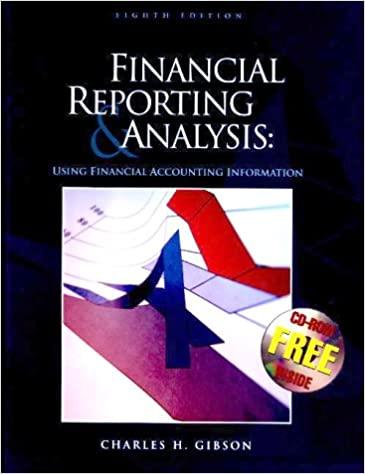On December 31, 2000, Farley Camera, Inc. issues 5,000 stock appreciation rights to its president to entitle
Question:
On December 31, 2000, Farley Camera, Inc. issues 5,000 stock appreciation rights to its president to entitle her to receive cash for the difference between the market price of its stock and a preestablished price of $20. The date of exercise is December 31, 2003, and the required service period is the entire three years. The market price fluctuates as follows:
12/31/01—$23.00; 12/31/02—$21.00; 12/31/03—$26.00. Farley Camera accrued the following compensation expense:
2001 $15,000 2002 $(10,000) 2003 $25,000 Required
a. What is the executive’s main advantage of receiving stock appreciation rights over stock options?
b. In 2001, a $15,000 expense is recorded. What is the offsetting account?
c. What is the financial impact on the company of the exercise of the stock appreciation rights in 2003? How does this impact affect financial statement analysis?
P 9-12a. A company has only common stock outstanding.
Required Answer the following multiple-choice question. Total stockholders’
equity minus preferred stock equity divided by the number of shares outstanding represents the:
1. Return on equity 3. Book value per share 2. Stated value per share 4. Price/earnings ratio P 9-12b. Maple Corporation’s stockholders’ equity at June 30, 2000, consisted of the following:
Preferred stock, 10%, $50 par value; liquidating value,
$55 per share; 20,000 shares issued and outstanding $1,000,000 Common stock, $10 par value; 500,000 shares authorized; 150,000 shares issued and outstanding 1,500,000 Retained earnings 500,000 Required Answer the following multiple-choice question. The book value per share of common stock is:
1. $10.00 3. $13.33 2. $12.67 4. $17.65
Step by Step Answer:

Financial Reporting And Analysis Using Financial Accounting Information
ISBN: 9780324023534
8th Edition
Authors: Charles H Gibson





